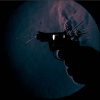DFW1911
Member
All,
Couldn't find these on a search and thought you might find them interesting.
RE: the .44:
This full-scale Schlieren image shows the discharge of a .44 Magnum revolver...
Two spherical shock waves are seen, one centered about the gun’s muzzle (the muzzle blast) and a second centered on the cylinder.
The supersonic bullet is visible at the far left.
And for the '06:
KER-POW! Two different shock wave patterns emerge in this high-speed schlieren photograph of a .30-06-caliber rifle discharge. The wake of the supersonic bullet heads to the left. A much larger, spherical shock wave—a phenomenon recently made visible by advanced imaging methods—balloons from the muzzle's length. Hot gases billow from the muzzle's tip.
I'm a bit jealous since I can't even take a picture with a "fully-automatic" camera !
!
Take care,
DFW1911
Couldn't find these on a search and thought you might find them interesting.
RE: the .44:
This full-scale Schlieren image shows the discharge of a .44 Magnum revolver...
Two spherical shock waves are seen, one centered about the gun’s muzzle (the muzzle blast) and a second centered on the cylinder.
The supersonic bullet is visible at the far left.
And for the '06:
KER-POW! Two different shock wave patterns emerge in this high-speed schlieren photograph of a .30-06-caliber rifle discharge. The wake of the supersonic bullet heads to the left. A much larger, spherical shock wave—a phenomenon recently made visible by advanced imaging methods—balloons from the muzzle's length. Hot gases billow from the muzzle's tip.
I'm a bit jealous since I can't even take a picture with a "fully-automatic" camera
Take care,
DFW1911






